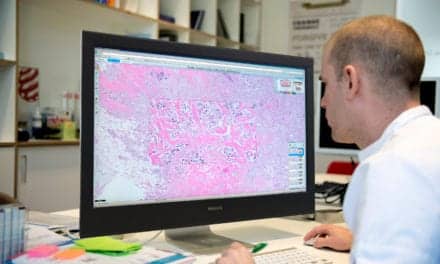Summary: Investigators adapted a cancer detection method to identify tiny amounts of intact SARS-CoV-2 viral particles in blood and other fluids, enabling real-time viral load monitoring for acute COVID.
Takeaways:
- Advanced Viral Detection: The method detects as few as three intact SARS-CoV-2 viral particles in 1 milliliter of blood, offering highly sensitive monitoring of viral loads in COVID-19 patients.
- Versatile Biofluid Sampling: Effective in over 150 samples, including plasma, saliva, and stool, the technology tracks virus levels over time, with detection possible up to 50 days post-infection.
- Implications for Long COVID: The ability to serially monitor viral loads could guide treatment for long COVID and has potential applications for other infectious diseases.
Investigators from Mass General Brigham have found that a method originally designed for cancer detection can also identify and monitor even tiny amounts of SARS-CoV-2 intact viral particles in blood and other fluids from patients with acute COVID-19 infections, creating the potential for guiding future treatment of patients. The research is published in Science Advances.
“During the early days of the pandemic, we wanted to see if our approach for isolating small cancer vesicles could be adapted to isolate SARS-CoV-2 virus from biofluids like blood, stool, and saliva,” says co–senior author Shannon L. Stott, PhD, a member of the faculty at the Center for Engineering in Medicine & Surgery at Massachusetts General Hospital (MGH), a founding member of the Mass General Brigham healthcare system. “We quickly built an interdisciplinary team of experts to adapt our technology to push the boundaries of intact virus detection.”
Detecting COVID Viral Particles in Blood
Stott and colleagues in her lab, and the lab of Genevieve M. Boland, MD, PhD, surgical director of the Termeer Center for Targeted Therapies at MGH, found that their technique could detect as few as three viral particles in 1 milliliter of blood. When tested in more than 150 samples (103 plasma, 36 saliva, and 29 stool samples) from patients with COVID-19, the method accurately measured virus levels across time, with intact viral particles detected as far out as 50 days after an initial infection.
“With clinical needs changing, the ability to serially monitor viral load in this manner has great potential for guiding the treatment of patients with long Covid,” says Stott. “This versatile technology could also have widespread applications in viral monitoring for current and future infectious diseases.”
Further Reading
In addition to Stott and Boland, Mass General Brigham authors include Daniel C. Rabe, Adarsh Choudhury, Dasol Lee, Evelyn G. Luciani, Uyen K. Ho, Sara Veiga, William A. Michaud, Diane Capen, Elizabeth A. Flynn, Nicola Hartmann, Alona Muzikansky, Marcia B. Goldberg, Douglas S. Kwon, Xu Yu, Aaron F. Carlin, Jochen K. Lennerz, Peggy S. Lai and Sayed Ali Rabi. Additional authors include Alex E. Clark, Jeffrey E. Glasgow, Aaron F. Garretson, Yves Theriault, James A. Wells, and Anh N. Hoang,
Photo: Dreamstime





